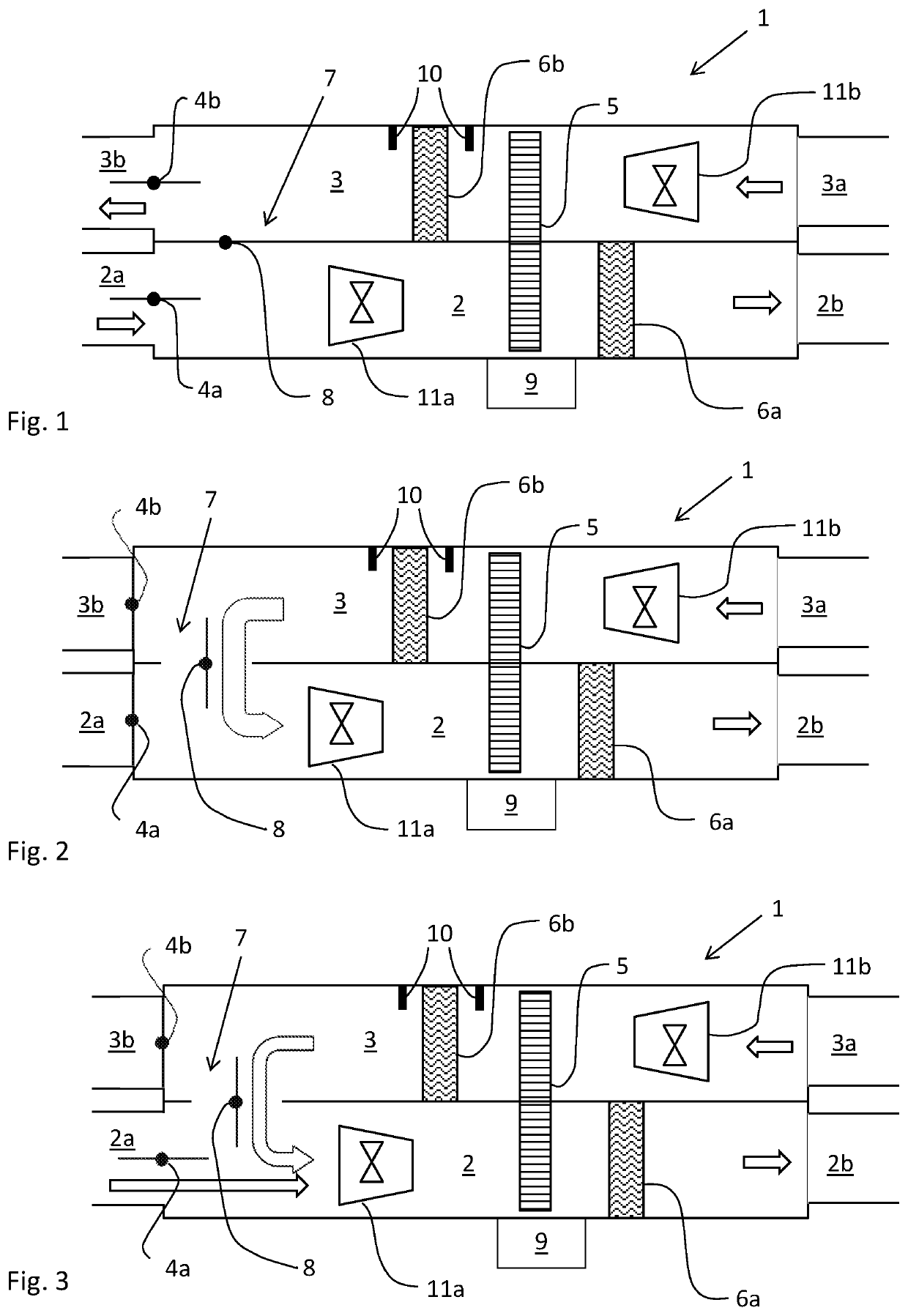Defrosting cycle control
a cycle control and defrosting technology, applied in the field of defrosting, can solve the problems of undetectable high energy consumption, high energy consumption, and loss of heat from the building to the outside to a higher degree, and achieve the effect of improving energy recovery and more efficient defrosting
- Summary
- Abstract
- Description
- Claims
- Application Information
AI Technical Summary
Benefits of technology
Problems solved by technology
Method used
Image
Examples
Embodiment Construction
[0052]In FIGS. 1-3 is disclosed an Air Handling Unit (AHU) 1 according to an embodiment of the invention. The AHU 1 comprises a supply air channel 2 having a supply air inlet 2a and a supply air outlet 2b for delivering fresh air to an air ventilation system in a building. The AHU further comprises an extract air channel 3 having an extract air inlet 3a receiving extract air, also commonly called exhaust air or indoor air, and guiding the extract air to the outside through an extract air outlet 3b. Hence, the left side of the AHU in the figures is intended to be connected to the surroundings or outdoor while the right side of the figures is intended to be connected to an air ventilation system in a building for distribution of fresh air to the building and extraction of exhaust air from the interior of the building. In order to control the air flow in the supply air channel 2 is the AHU 1 provided with a supply air damper 4b in the supply air channel 2 close to the supply air outlet...
PUM
 Login to View More
Login to View More Abstract
Description
Claims
Application Information
 Login to View More
Login to View More - R&D
- Intellectual Property
- Life Sciences
- Materials
- Tech Scout
- Unparalleled Data Quality
- Higher Quality Content
- 60% Fewer Hallucinations
Browse by: Latest US Patents, China's latest patents, Technical Efficacy Thesaurus, Application Domain, Technology Topic, Popular Technical Reports.
© 2025 PatSnap. All rights reserved.Legal|Privacy policy|Modern Slavery Act Transparency Statement|Sitemap|About US| Contact US: help@patsnap.com

